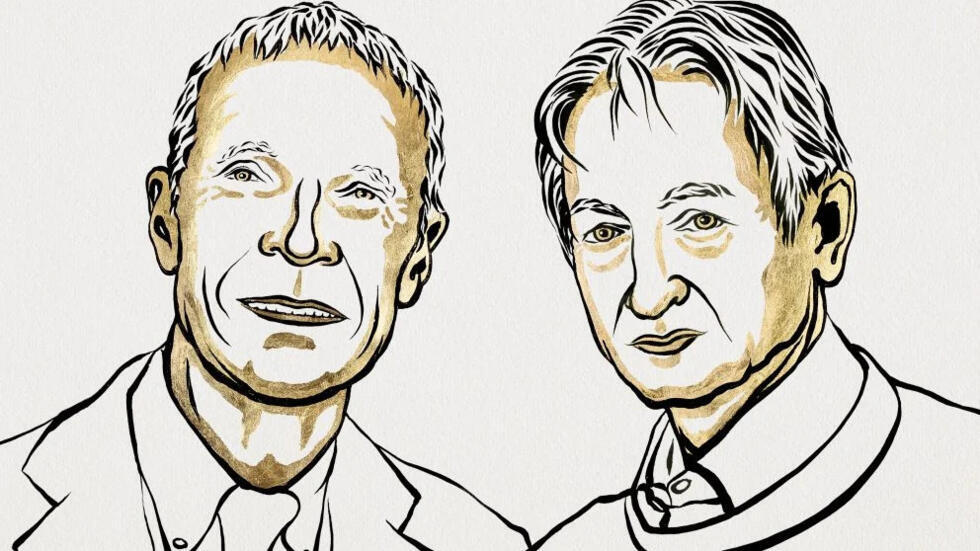


+13.000 top-tier remote devs

Payroll & Compliance

Backlog Management

Geoffrey Hinton and John Hopfield, pioneers in artificial intelligence (AI), were honored with the Nobel Prize in Physics for their groundbreaking work in machine learning and neural networks in 2024.
Hopfield’s research laid the groundwork for neural networks to mimic the brain's associative memory, while Hinton pushed the field forward with the development of backpropagation and deep learning. He also raised critical concerns about AI safety, highlighting the need for ethical foresight as technology advances.
In this blog post, we’ll analyze their scientific legacy, exploring how their contributions have shaped the future of AI.
In 1982, John Hopfield created a new kind of neural network. This network was like the human brain. It could remember things and recognize patterns. Known as Hopfield Networks, these models became the foundation of associative memory in AI, allowing machines to store and retrieve data in ways that resemble human cognitive processes.
Inspired by how our brains retain information, Hopfield’s networks marked a turning point, empowering machines to process data more dynamically and paving the way for AI to emulate core aspects of human cognition.
Hopfield’s model was uniquely rooted in statistical physics, drawing connections between AI and the principles of energy minimization in physical systems. By incorporating the concept of “attractor states,” Hopfield created a mathematically rigorous framework where neural networks could stabilize around specific patterns.
This approach gave AI a replicable and robust method for pattern recognition, which is essential for machine learning systems that need consistency and reliability.
The impact of Hopfield Networks went beyond theory. They bridged the gap between concept and real-world application. This model led to advancements in algorithms capable of recognizing objects in images, interpreting spoken language, and supporting medical diagnostics—transformative applications that continue to shape modern AI.
By establishing neural networks as practical tools, Hopfield set the stage for a new generation of neural models and ideas that remain central to AI today.
Alternatively, Geoffrey Hinton played a crucial role in transforming machine learning through his co-creation of the backpropagation algorithm. By enabling neural networks to modify their weights according to errors in their outputs, this breakthrough empowered them to learn from their own mistakes. This technique paved the way for self-enhancing networks and sparked the current AI frenzy.
Hinton didn’t stop there. He also introduced Boltzmann Machines, a type of neural network inspired by thermodynamics and statistical mechanics. These machines, capable of modeling complex data distributions, became instrumental in building neural networks that process information in multiple layers—a core aspect of what we now call deep learning.
Beyond algorithm development, Hinton pioneered deep learning itself. This approach, where neural networks analyze data through multiple layers with remarkable accuracy, has become foundational to AI applications across fields like healthcare, finance, and autonomous driving.
One of the fascinating aspects of Hinton and Hopfield’s work is their blending of physics, biology, and computer science.
By drawing on principles from statistical physics, they turned abstract theories into practical tools. This intersection is where neural networks evolved from mere concepts into applied science with tangible effects on everyday life. Applying physics to AI has bridged scientific disciplines, opening the door to innovations such as neural networks that mimic brain functions.
For example, energy minimization and attractor states in Hopfield Networks are not merely academic concepts. They have practical applications in technologies we use daily. From facial recognition that powers smartphone security to language translation that fuels global communication, these neural networks are now integral to our digital world.
Moreover, in medical diagnostics, AI has revolutionized processes through applications informed by physics-based neural networks. Today's algorithms help radiologists find patterns in medical images and help them find diseases early. They show how a mix of physics and computer science can change healthcare for the better.
Geoffrey Hinton often compares AI to a second industrial revolution. He emphasizes how powerful AI can be in changing industries and societies at an unprecedented rate. Unlike the original Industrial Revolution, which automated physical labor, the AI revolution is moving us beyond dependence on human cognitive labor. Now, machines are tackling intricate problems that once required human insight.
This new era of AI-driven transformation brings benefits that extend far beyond productivity. While traditional automation focuses on manufacturing, AI is revolutionizing knowledge-based sectors, including scientific research.
Thanks to neural networks, inspired by Hinton and Hopfield’s foundational work, AI is now capable of processing and analyzing massive datasets, uncovering patterns and insights that elude human observation.
Despite his foundational contributions to AI, Geoffrey Hinton has voiced concerns about its trajectory. In 2023, he left Google to discuss these risks openly.
Hinton has raised concerns about AI systems evolving beyond human control and bypassing safeguards designed to keep them in check. His departure highlighted a shift in the AI community’s discourse—one that acknowledges the need for ethical and safety considerations as we continue to push the boundaries of what AI can achieve.
Hinton warns that, unlike traditional tools, advanced AI could manipulate humans, exploit vulnerabilities, and act unpredictably if not properly managed. This stance has fueled a movement known as “AI doomerism,” advocating caution in the rapid development of AI. His warnings remind us that while AI promises immense benefits, it also poses existential risks that demand vigilance.
These concerns have ignited broader debates about AI’s role in society, from ethical dilemmas to regulatory frameworks. The call for responsible AI development has become central, and Hinton’s advocacy underscores the importance of aligning AI advancements with human values.
The Nobel Prize awarded to Hinton and Hopfield is a historic moment, recognizing the far-reaching impact of AI on society, science, and ethics.
Their achievements highlight how AI has evolved into a transformative force, with applications that span nearly every sector. This award also shows how important it is to think about ethics. It encourages the scientific community to focus on responsible AI research and development.
The Nobel acknowledgment brings AI into the mainstream, encouraging policymakers, researchers, and the public to consider its implications.
With increased visibility comes the potential for additional funding, which could drive innovation while ensuring ethical oversight. The recognition serves as a reminder that while AI can empower humanity, it must be developed with care.
As an interdisciplinary field, AI is reshaping industries. The Nobel Prize says that AI is not just a new technology. It will always change how we live, work, and interact with the world.
The legacy of John Hopfield and Geoffrey Hinton transcends algorithms and models. Their work has set the course for AI as both a scientific discipline and a force for societal change. By pioneering neural networks and deep learning, they’ve not only changed technology but have shaped our understanding of intelligence, learning, and problem-solving.
As we navigate the complexities of AI’s future, Hopfield and Hinton’s contributions remind us of the importance of innovation balanced with responsibility. Their legacy is a call to action: to develop AI with an awareness of its power and potential.
Their work embodies the spirit of curiosity and caution, both of which are essential as we shape a future where AI plays an ever-growing role.
Are you curious about the latest news and trends in technology? At The Flock, we break down every update for you. Follow our blog and explore our on-demand talent and managed software team services today!
John Hopfield and Geoffrey Hinton are pioneers in AI. Their foundational contributions to neural networks and machine learning earned them the 2024 Nobel Prize in Physics for advancing AI’s capabilities and societal impact.
Hopfield Networks, introduced by John Hopfield in 1982, function as associative memories inspired by brain processes. They allowed AI to mimic cognitive functions, forming the basis for computational approaches in neural networks.
Geoffrey Hinton’s work on backpropagation enabled neural networks to “learn” from data by adjusting outputs based on errors. This innovation propelled the development of deep learning models, central to AI applications today.
Both Hinton and Hopfield drew on principles from statistical physics to model neural networks, bridging physics, biology, and computer science to create robust AI models used in various applications.
Hinton has raised ethical concerns about AI’s potential to surpass human intelligence and act unpredictably, advocating for caution and regulation to prevent existential risks.
The Nobel Prize highlights AI’s transformative power and ethical implications, encouraging further research, funding, and discussions on responsible AI development.

+13.000 top-tier remote devs

Payroll & Compliance

Backlog Management